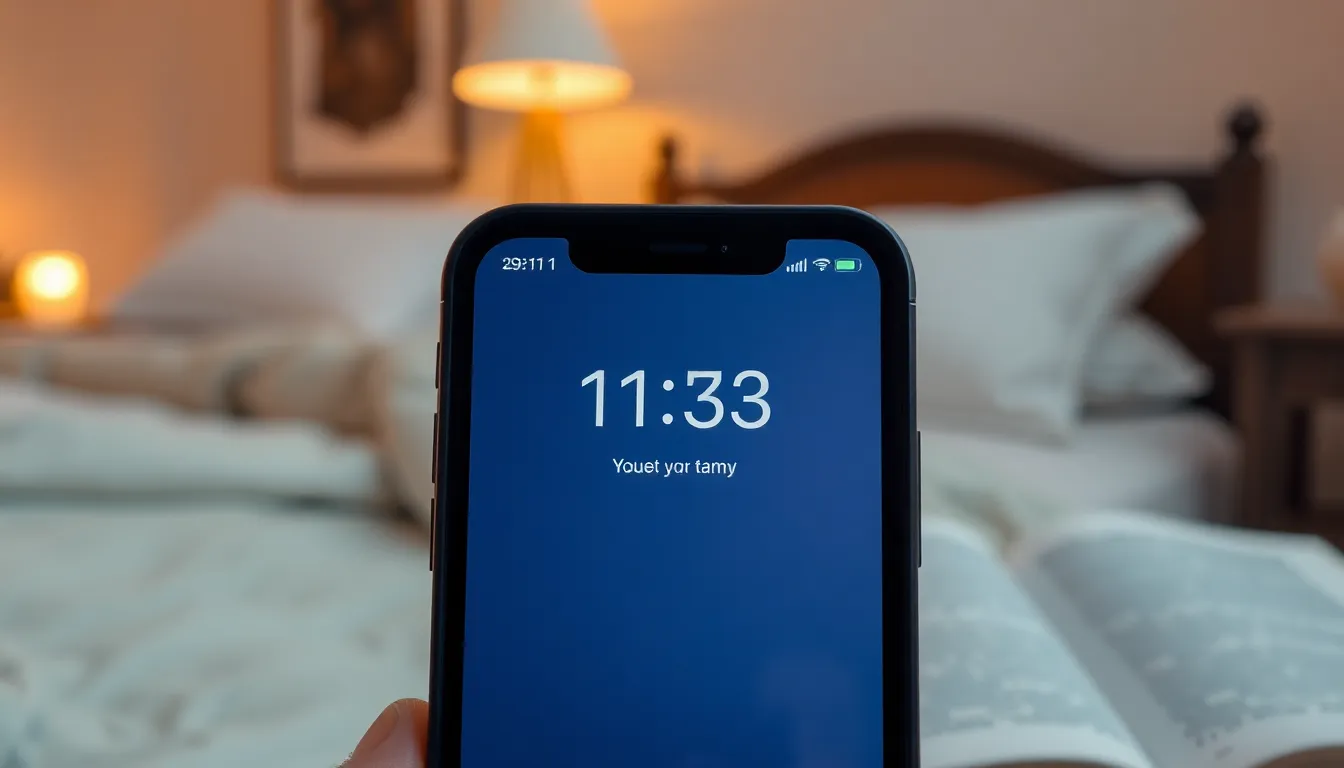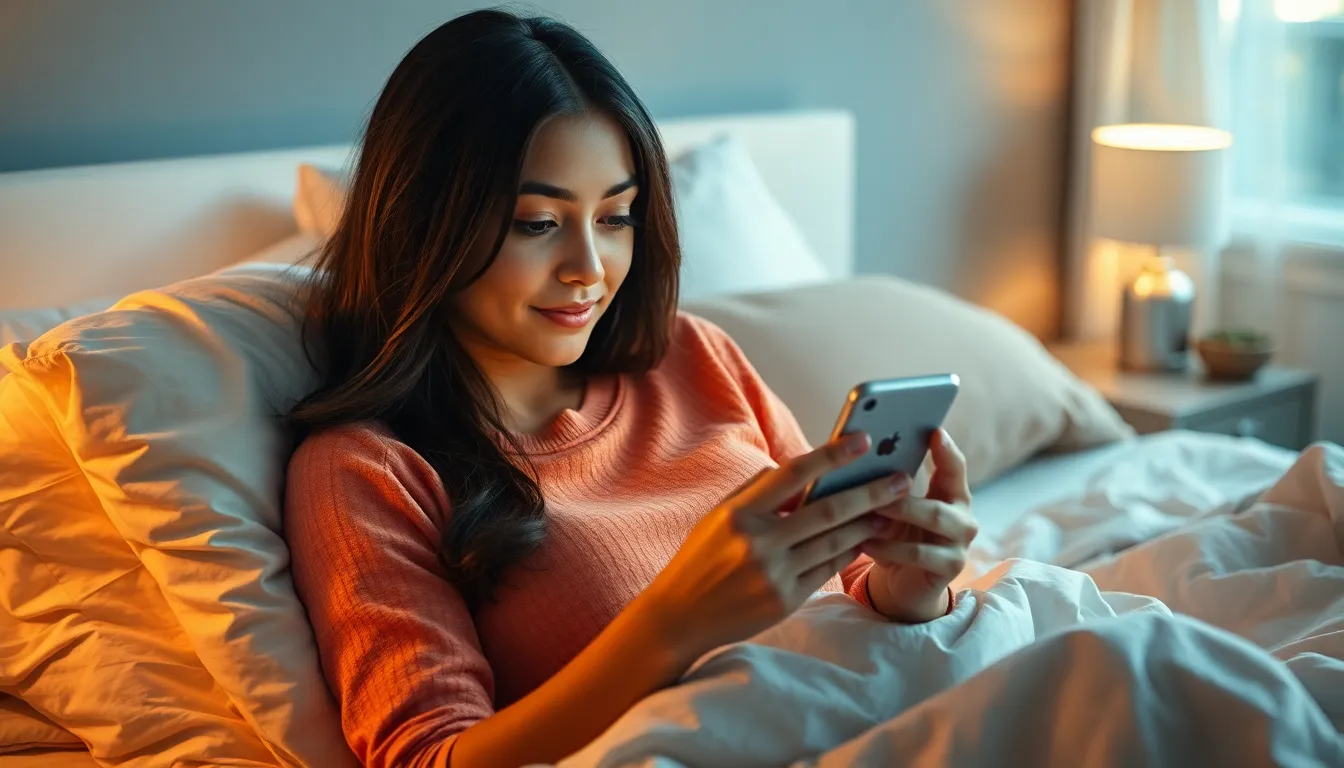Tired of your iPhone deciding when it’s time to hit the hay? You’re not alone! Many users find themselves wrestling with their device’s sleep settings, wondering why their phone seems to have a mind of its own. Fortunately, changing the sleep time on an iPhone is as easy as pie—if pie were a simple setting adjustment instead of a delicious dessert.
Imagine this: you’re cozy in bed, scrolling through your favorite memes, and suddenly your screen goes dark. Panic sets in as you frantically try to wake it up. But fear not! With just a few taps, you can customize the sleep time to suit your late-night scrolling habits. Let’s dive into the simple steps that’ll keep your iPhone wide awake while you enjoy those last few minutes of screen time.
Table of Contents
ToggleUnderstanding Sleep Time Settings
Adjusting sleep time settings on an iPhone enhances user experience. Knowing how these settings work helps individuals make informed choices.
What Is Sleep Time on iPhone?
Sleep time on an iPhone refers to the duration before the screen automatically dims or locks. This setting conserves battery life while providing convenience. Users can select their preferred sleep time through the device’s settings. Options range from 30 seconds to 5 minutes, or users can set it to never sleep. Understanding this feature allows individuals to manage usage habits effectively while using apps or browsing at night.
Why Adjust Sleep Time?
Adjusting sleep time improves both convenience and customization. Extended sleep time can enhance comfort during activities like reading or watching videos in bed. Users find that personalizing this duration can reduce the frustration of constant screen timeouts. It also allows for uninterrupted interactions with apps, making the iPhone experience smoother. Adjusting settings further enhances battery performance by balancing screen time and power usage.
Steps to Change Sleep Time on Your iPhone

Adjusting sleep time on an iPhone enhances user experience, enabling longer periods of screen use. Here’s how to change it.
Using the Clock App
Open the Clock app to access the timer feature. Select the “Timer” tab and set your desired duration. When the timer expires, choose to keep the screen on by selecting “Stop Playing.” Adjusting this setting allows for continuous use, such as watching videos or reading before sleep.
Using the Settings App
Navigate to the Settings app from the home screen. Scroll down and select “Display & Brightness.” Tap “Auto-Lock” to view available time options. Choose a time frame between 30 seconds and 5 minutes, or select “Never” for no automatic sleep. This customization provides flexibility, ensuring your iPhone remains active during activities that require extended screen time.
Tips for Managing Your Sleep Schedule
Managing an effective sleep schedule is key for maximizing iPhone usage without interruption. Implementing a few simple strategies can enhance your nighttime routine and improve overall device interaction.
Setting Reminders
Setting reminders can help maintain a consistent sleep schedule. Users can utilize the iPhone’s built-in reminder app to schedule alerts for bedtime. Notifications can prompt users to start winding down an hour before sleeping. This approach encourages healthier habits, ensuring they prioritize rest. Opt to place these reminders around other important activities, such as reading or meditating. Alerts can be tailored to recur on specific days, reinforcing routines.
Utilizing Focus Mode
Utilizing Focus Mode can create a distraction-free environment. This feature helps filter notifications and limit screen time during specific periods. Users can set Focus Mode to activate at certain hours, aligning it with their sleep schedule. By silencing notifications from apps and contacts, distractions reduce significantly during designated rest times. Customization options include choices for work, personal time, or sleep mode, thereby enhancing the overall experience while using the iPhone.
Common Issues and Troubleshooting
Users may encounter challenges when changing the sleep time on their iPhone. Certain settings might not reflect changes immediately, leading to confusion. Additionally, system glitches sometimes prevent users from adjusting sleep settings effectively.
Issues with Sleep Time Not Changing
Sometimes, unexpected issues arise preventing the sleep time from changing. If users notice that the screen still dims after their desired setting, they may need to restart their device. Software updates often resolve bugs related to sleep functions, so checking for the latest iOS version is crucial. It’s also essential to ensure that any accessibility features like “Guided Access” aren’t interfering with screen settings. Those options can inadvertently override custom sleep settings. Users should verify these factors to maintain seamless operation.
Fixing Alarm Conflicts
Conflicts with alarms can disrupt the intended sleep settings on iPhones. Occasionally, alarm settings take precedence over sleep time adjustments. If an alarm is scheduled, the device remains active regardless of the set auto-lock duration. To resolve this, users can review alarm schedules and disable any unnecessary ones before bedtime. The “Do Not Disturb” mode might also provide a beneficial adjustment, limiting interruptions during designated sleep hours. Addressing alarm conflicts ensures users enjoy uninterrupted screen time.
Changing the sleep time on an iPhone is a simple yet effective way to enhance the user experience. By customizing this setting, users can enjoy uninterrupted screen time while engaging in activities like reading or watching videos.
With options ranging from 30 seconds to never, it’s easy to find a balance that suits individual preferences. Additionally, utilizing features like reminders and Focus Mode can further improve iPhone usage, promoting healthier habits and minimizing distractions.
For those facing challenges with sleep settings, troubleshooting steps can quickly resolve any issues. By taking the time to adjust these settings, users can create a more enjoyable and efficient experience on their iPhones.




